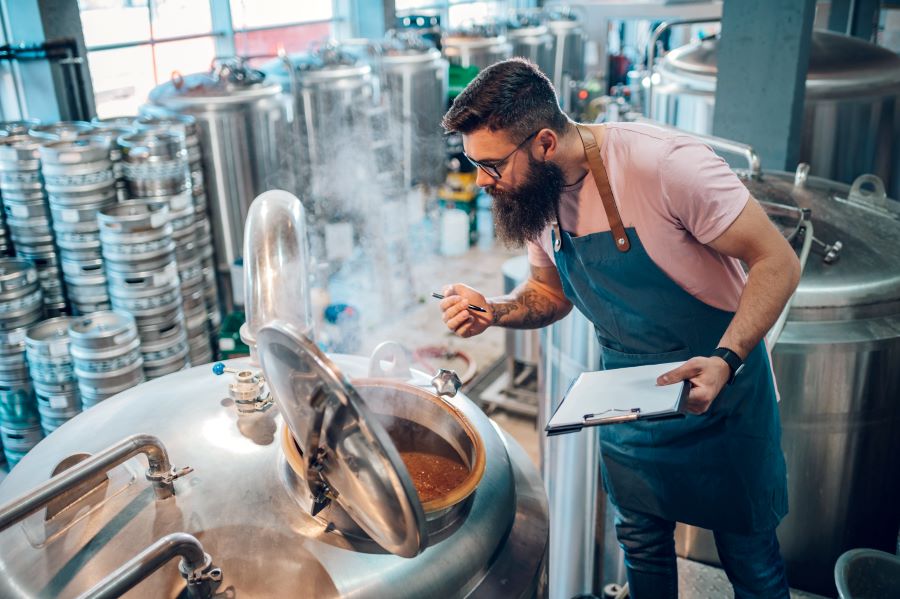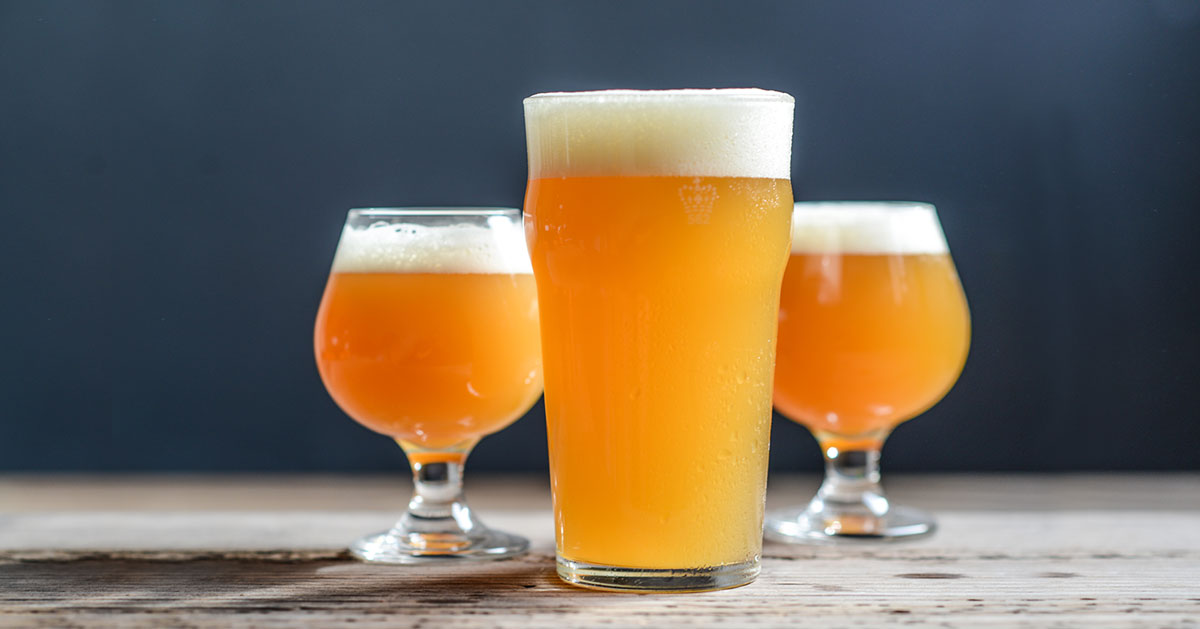Beer Brewing Equipment
What goes into a bottle of beer? If you’re brewing at home, it takes a list of key pieces of homebrew equipment, ingredients, and an easy-to-follow recipe to create your own brewing system. For first-time brewers, the good news is that equipment is an upfront investment. Once you get set up, you can reuse your equipment batch after batch.
In this guide, we’ll explore what it takes to brew your own beer and what makes up the best home beer making kit.
Can You Save Money Making Your Own Beer?
In the long run, you can save money by making your own beer at home. After upfront investments in the equipment, it’s cheaper to brew your own beer than to buy craft beer from the liquor store or a bar. To see the math for yourself, consider that five gallons of beer (the average amount made from beer ingredient kits) produces about 48 bottles of beer. So if you spend $50 on ingredients, bottles, and caps, that comes out to about $0.93 per bottle.
Cost savings aren’t the only benefit of brewing beer at home. This hobby is also a creative outlet and home brewers often find excitement in tinkering with different equipment, ingredients, recipes, and techniques. In other words, you can brew beer at home to save money in the long run, figure out new and exciting recipes, or a combination of both!

How Long Does It Take To Brew Beer?
The average time it takes to brew a batch of beer is two to four weeks. It takes a day to brew, one to two weeks to ferment, a day to bottle, then another one to two weeks to carbonate. Always review the recipe you’re using when planning your schedule because brewing times vary. Sometimes, you may opt to add a second fermentation process, which may lengthen the overall time it takes to finish your batch.
How To Make Beer
The home brewing process involves two days of active work with some extra time in between those days for fermentation. Here’s how to brew beer at home in 10 steps (these steps assume you’ll be brewing five gallons of beer):
Day One: Brew Day
On this day, you’ll make your wort (or beer brewing mixture).
- Set up equipment. For brewing, you’ll need a heat source (your stovetop will typically work), a large pot (holds about 5 gallons), a stirring spoon, a measuring cup, a thermometer, a strainer, a fermenting bucket (holds about 6 gallons), an airlock, and a hydrometer.
- Gather ingredients. The quickest way to gather the ingredients you need is with a beer ingredient kit. These kits come with the grains, hops, and malts pre-portioned out for each recipe. You’ll just need to supply the yeast, priming sugar, and any optional additions.
- Clean then sanitize everything. Brewing is especially susceptible to contamination from bacteria, so it’s critical to sanitize all of your equipment before each and every use. To get the best results, use cleaning and sanitizing supplies designed specifically for home brewing equipment.
- Boil ingredients. Follow the temperature and timing directions for your recipe as you add ingredients to create the wort (that’s what the mixture of beer-making ingredients is called before it ferments into beer). See how easy the steps are to follow with one of our beer ingredient kit recipes.
- Cool and ferment the wort. After boiling, it’s time to transfer the wort to your fermenting container. Then, add water until your mixture fills five gallons. Next, you need to cool your mixture to 80°F or below. Cool your wort off with an ice bath or with a home brew chiller down to 75-80 degrees. Transfer the mixture to your fermenter, add yeast, then seal your fermenter with an airlock and VOILA!
Waiting Period: Fermentation
There’s nothing extra to do here. Just be patient, and let your wort ferment into beer!
Day Two (After the Waiting Period Ends): Bottling
This part can get a bit messy, but it’s worth it when you get to taste the brew you made yourself!
- Clean and then sanitize everything. To help reduce the risk of contaminants ruining your batch, sanitize all of your equipment before each and every use. Yes, that even includes your bottle caps! For a thorough cleaning and sanitization prep, try PBW.
- Transfer the beer to the bottling container. Using your siphon, transfer your fermented beer into your bottling container (which should have a spigot ready to go).
- Prime bottles with priming sugar. Measure out the proper amount of priming sugar according to your recipe, then add it to your bottles with sanitized spoons and funnels. Priming sugar will give your beer the carbonated quality that you and other drinkers will expect from a tasty beer.
- Fill bottles. Open the spigot and let your brew flow! Using a tube can help reduce spillage, but keep some paper towels handy just in case.
- Cap and store bottles. Cappers are an important tool because they ensure you seal each and every bottle properly, which keeps away those pesky contaminants. Once sealed, allow the beer to carbonate in bottles one to two weeks before consumption.
- Share your homemade brew. You set up your equipment, cleaned everything thoroughly, boiled your wort, fermented your mixture, and bottled up each and every precious drop. Now it’s time to kick back with friends, family, and your homemade brewskis!
Is It Worth Making Beer at Home?
Making beer at home can be a delightful and cost-effective hobby. As we covered earlier, making your own craft beer can actually be cheaper than getting it from the store. There’s also plenty to explore as a home brewer. From exciting recipes to advanced equipment, you can continue to challenge yourself in a rewarding way. Whether it’s worth it to make beer at home is entirely up to you, your interests, your budget, and the amount of time you want to spend on your hobbies. If you’re on the fence, consider these two questions:
- Do you like making stuff?
- Do you like beer?
If you’ve answered yes to both of these questions, welcome home.

What Equipment Do You Need To Brew Beer at Home?
To brew beer at home, you’ll need the following pieces of home brewing equipment:
- Fermenter
- Airlock
- Brew Pot
- Heat Source
- Siphon
- Cleaning and Sanitizing Supplies
- Hydrometer
- Capper
- Bottles
- Caps
- Stirring Spoon
- Measuring Cup
- Thermometer
Head over to Great Fermentations to check items off your home brewing equipment list. Still trying to figure out where to start? Give us a call—our knowledgeable and passionate staff is always happy to help!
What Equipment Is Required for the Home Brewing Process?
When it comes to home brewery equipment, you need—at a minimum—a way to boil, ferment, and bottle your beer. You’ll also need to be able to sanitize your equipment every step of the way. The checklist in the previous section will help you cover the basics. If you’re looking for more advanced equipment, you can also explore versatile pieces like the Anvil Brewing 7-Gallon Crucible Conical Fermenter. Highlights of this product include a built-in spigot and extendable legs, so you can easily bottle or keg your brew without needing to transfer it to a different container first.
Do Home Brewing Kits Work Well?
Beer ingredient kits are a great starting point for home brewing for beginners. Why? Because a home brewing kit takes the guesswork out of gathering ingredients and going through the brewing process. This cuts down on trial and error, saving new brewers both time and frustration.

What Are the 5 Main Ingredients in Beer?
The 5 main ingredients in beer are:
- Water: Water is the base of any beer recipe.
- Yeast: Yeast converts sugar to alcohol during the fermentation process.
- Malt: Malted grains or barley form the base of a beer’s sweet flavor profile and color.
- Hops: Hops add bitterness to the beer’s flavor profile, which helps to balance out the sweetness from malted grains or barley.
- Additional Flavors: Fruit extracts, honey, spices, and other flavors can all help add a personal touch to your brew.
Malts and hops require a delicate balance to get the desired flavor profile. Beer ingredient kits portion out these ingredients, so you don’t have to worry about making your brew too sweet or too bitter. They also include instructions on how to add the right amount of yeast, water, and optional additional flavors.
Are Home Brewing Kits Worth It?
Home brewing kits are worth it because they take the hassle out of preparing to make your own beer. With pre-portioned ingredients, you cut down on shopping time and guesswork. That means more time and energy for actually brewing.
How to brew beer at home without a kit is similar to brewing with a kit, except for two key differences:
- You have to hunt down your own malts and hops and portion them out correctly.
- You have to plan out your own recipe or find one online that matches your goal.
Looking for a brewing kit for a specific beer? Start your search at Great Fermentations!
How Great Fermentations Can Help You Find Beer Brewing Supplies
The best homemade beer recipe makes the beer you love to drink—and it’s easy to follow! At Great Fermentations, you can find recipes that fit both requirements. Explore our stock of:
- IPA kits
- Ale kits
- Porter kits
- And so much more
Visit our store, browse online, or give us a call to see how we can help you find the best beer brewing equipment and supplies!



